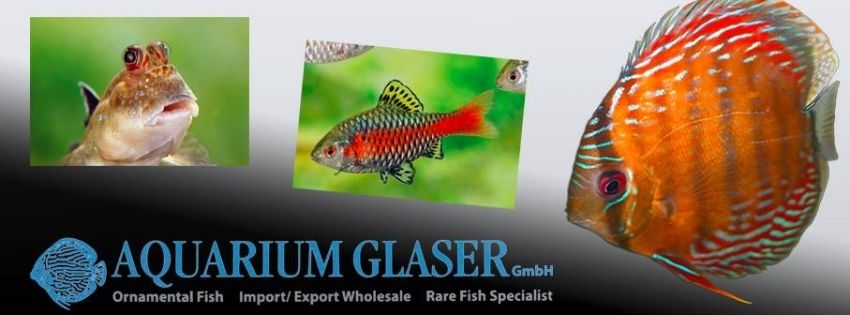Herzlich Willkommen!
Hier entsteht eine schicke neue Website für Aquarium Glaser GmbH. Sie basiert auf chayns® von Tobit.Software, das aus Facebook-Seiten lebendige Websites macht. Neuigkeiten, Bilder, Termine und vieles mehr werden damit automatisch und immer wieder frisch ganz speziell für diese Seite aufbereitet. Natürlich auch in einer für mobile Geräte optimierten Ansicht.
Polynemus paradiseus
Currently we have a really unusual #species of fish in our #fishhouse: #Polynemus #paradiseus. The #Polynemidae #family is almost unknown to #hobbyists, despite the fact that over the #centuries 96 species have been described, 42 are still valid, and these fish are important #food #fishes in their home range. Two species of the genus Polynemus have only 7 spines in the first dorsal fin (most species have 8), namely P. paradiseus, a species decribed as early as 1758 by #Linné and P. #hornadyai, described in 1936 by Myers. While P. paradiseus has a very wide distribution along the whole eastern coastline of the #Indian subcontinent to #Thailand, P. hornadyai is known so far only from the #Malayan part of #Borneo.
We have two very charming youngsters of P. paradiseus from Thailand in stock. The fish are only 6-8 cm long and come from #aquaculture, but the long filaments are much longer than the body inluding tail fin. These filaments serve as sensitive #organs, comparable to the ventral fins of the #gouramis (#Colisa and #Trichogaster). The origin of the filaments in Polynemus are the pectoral fins. Basically speaking, Polynemus inhabit river mouths and prefer brackish water. Maximum length reported for P. polynemus is 30 cm, but only very rarely specimens longer than 17 cm are collected.
These unusual fish should be kept in large #aquaria with sandy bottom and as little furnish as possible; they need free space for swimming. They feed on small invertebrates, #bloodworm is a perfect food for them. Against conspecifics and other fish, P. paradiseus are completely peaceful, but one must take care that other fish do not nip on the long filaments. These fish need high oxygen contents and are very sensitive against organic pollution of the water. In a long time sight they should be kept in strong brackish water (10-15 g salt/litre) or in pure #marine water, although our specimens are adoipted to pure #freshwater.
Photos & Text Frank Schäfer
><(((((°> <°)))))>< ><(((((°> <°)))))><
27. Aug. 2018 um 13:30 Uhr
Hypoptopoma gulare
The genus #Hypoptopoma comprises small to medium sized #loricariids. The largest species known becomes about 10 cm long. At the first glimpse they look much alike a #Otocinclus, but larger. Typical for members of Hypoptopoma is the position of the #eyes. They are placed in way at the side of the #head that the fish can look over almost 360° when it sits on a plant. This feature can be found among the loricariids only in Hypoptopoma and #Oxyropsis. The latter, however, has a flattened caudal peduncle, while in Hypoptopoma the caudal peduncle is oval in cross section.
Sadly determination of species of Hypoptopoma is a tricky thing, although in 2010 a throughout taxonomical #revision of the genus was published.
We obtain quite often a species from #Peru which we think is Hypoptopoma #gulare. This species has been described scientifically from the surroundings of #Loreto where collectors of #ornamental #fish often work. Maintaining Hypoptopoma is comparable to that of the much better known Otocinclus, but of course the larger Hypoptopoma need more food. So in case there do not grow enough #algae in the #tank it is necessary to feed the #suckers with #food #tablets or slices of #vegetables to make sure they find enough to eat. Against conspecifics and other fish Hypoptopoma are completely peaceful. They are open spawners, the male guards the eggs until they hatch. It is not possible to distinguish the sexes of this fsh externally.
Photos & Text Frank Schäfer
><(((((°> <°)))))>< ><(((((°> <°)))))><
24. Aug. 2018 um 13:30 Uhr
Neuer Aufklapper


